Top 10 Best AI Tools for Email Marketing (2025): Pricing, Features, Pros & Cons Explained

Email marketing is far from dead. But in 2025, it’s evolving: AI is no longer an add-on; it’s at the core of automation, personalization, and campaign optimization. With AI, you can draft emails in seconds, predict the best send times, segment your audiences dynamically, and optimize copy in real time.
In this article, you will find the 10 top AI tools for email marketing that are delivering real value today.
Why AI Email Tools Matter in 2025
Email marketing is smarter than ever. AI now drives subject lines, segmentation, personalization, and send-time optimization, helping marketers deliver precision at scale.
According to Litmus (2025), email remains the highest-ROI digital channel, generating $36–$50+ per $1 spent on average.
For Australian marketers, performance and compliance must work hand-in-hand. Under the Spam Act 2003, every commercial email requires:
- Express or inferred consent
- Clear sender identification
- A functional unsubscribe link
Recent ACMA penalties, ranging from $1.5 million to $4 million, demonstrate the cost of non-compliance.
How We Chose the 10 Best AI Email Tools
Each platform was evaluated on:
- AI depth (content generation, predictive analytics, automation)
- Ease of use and interface
- Integrations (CRM, eCommerce, analytics)
- Deliverability and compliance tools
- Pricing and scalability
- Australian readiness double opt-in, suppression lists, and audit trails
The Top 10 Best AI Tools for Email Marketing (2025)
Each review covers the following: Overview, AI features, pricing, pros & cons, best fit, and Australian compliance notes.
1. HubSpot Marketing Hub — AI-Powered Email + Breeze Agents
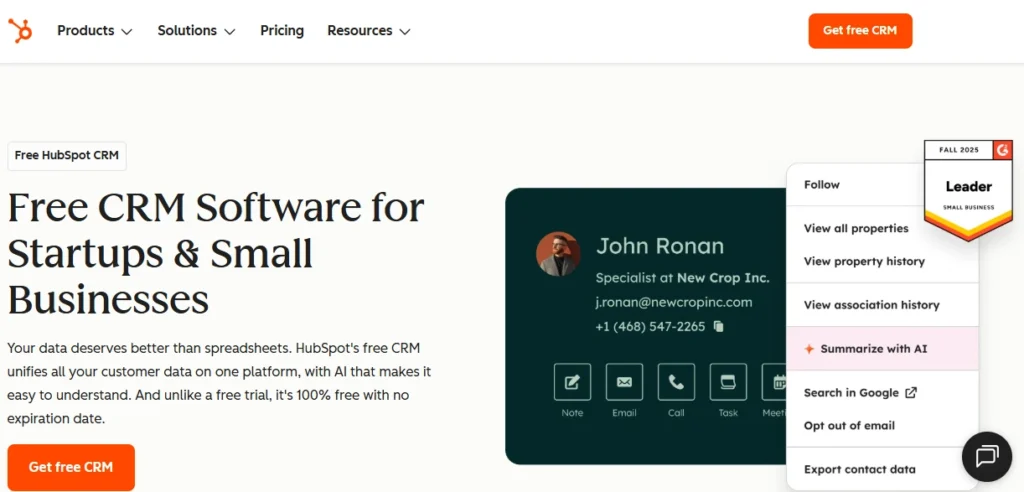
Why it stands out:
HubSpot combines CRM, marketing, and automation with native AI tools for drafting, optimizing, and analyzing email campaigns.
AI features:
AI Email Writer, predictive send-time optimization, and Breeze Agents that use CRM context to personalize messages.
Pricing (2025):
- Starter: from US $20/seat/month (1,000 contacts)
- Professional: US $890/month (3 seats, 2,000 contacts)
- Enterprise: US $3,600/month (5 seats, 10,000 contacts)
One-time onboarding fees may apply (US $3,000–US $7,000).
Pros: Deep CRM data, enterprise-grade analytics, scales easily.
Cons: High setup costs and a steeper learning curve.
Best for: B2B and B2C brands seeking an all-in-one growth platform.
Australia note: Use double opt-in and maintain consent logs for audits (acma.gov.au).
2. Klaviyo AI — Predictive eCommerce Email
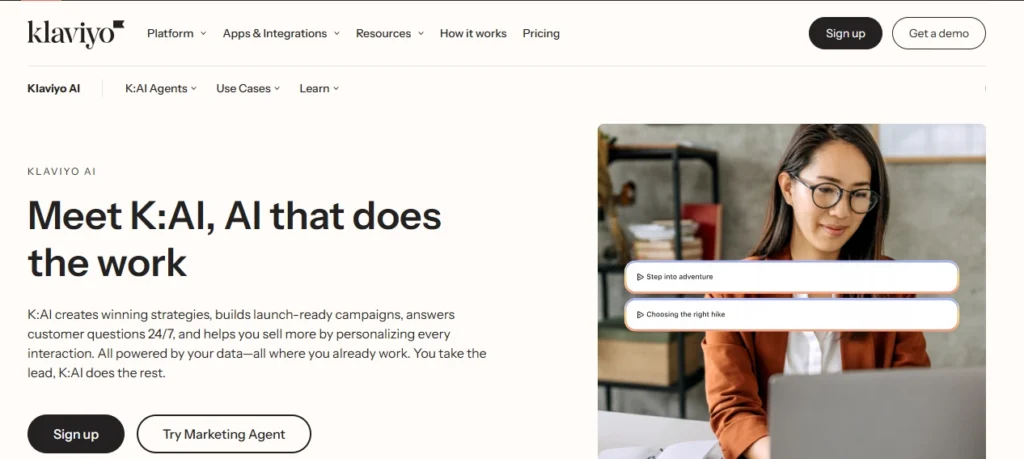
Why it’s great:
Built for online stores, Klaviyo uses K:AI to predict customer churn, lifetime value, and purchase likelihood.
AI features:
Dynamic segmentation, predictive analytics, and personalized content blocks.
Pricing (2025):
- Free: Up to 250 contacts
- Email plan: from US $20/month for 500 contacts
- Email + SMS: from US $35/month (includes 1,250 SMS credits)
~US $150/month for 10,000 contacts.
Pros: Outstanding Shopify/WooCommerce integration; rich eCommerce data.
Cons: Becomes costly as the list scales.
Best for: Online stores focused on retention and repeat purchases.
Australia note: Match predictive segments only to consented users.
3. ActiveCampaign — Predictive Send-Time + Smart Automation
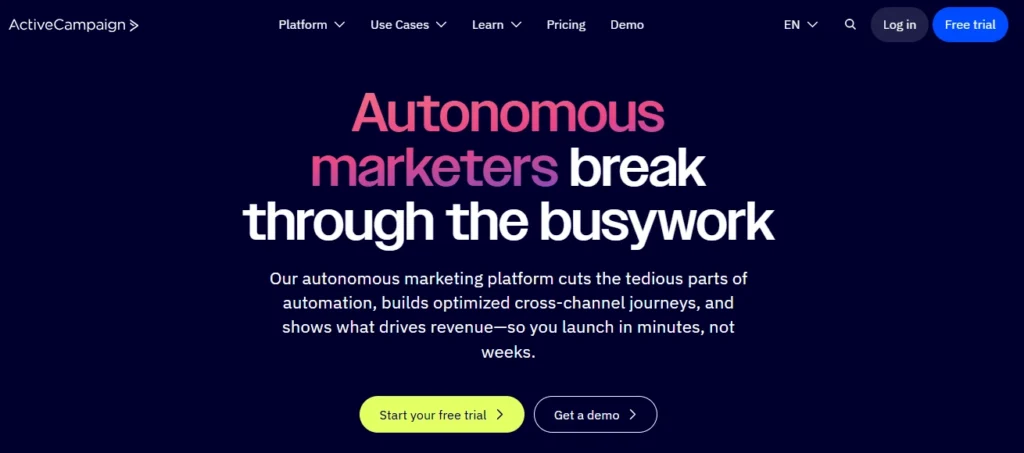
Why it’s here:
One of the best platforms for lifecycle automation, now with AI that calculates each user’s ideal send time.
AI features:
Predictive Sending, conditional content, and weekly-updated delivery models.
Pricing (2025):
Plans start at US $19/month, scaling by features and contact count.
Pros: Powerful automation engine, proven deliverability.
Cons: UI can feel dense to new users.
Best for: SMBs, B2B workflows, and advanced automation users.
Australia note: Respect subscriber time zones and ensure instant unsubscribe compliance.
4. Mailchimp — Predictive Segments + AI Assistant
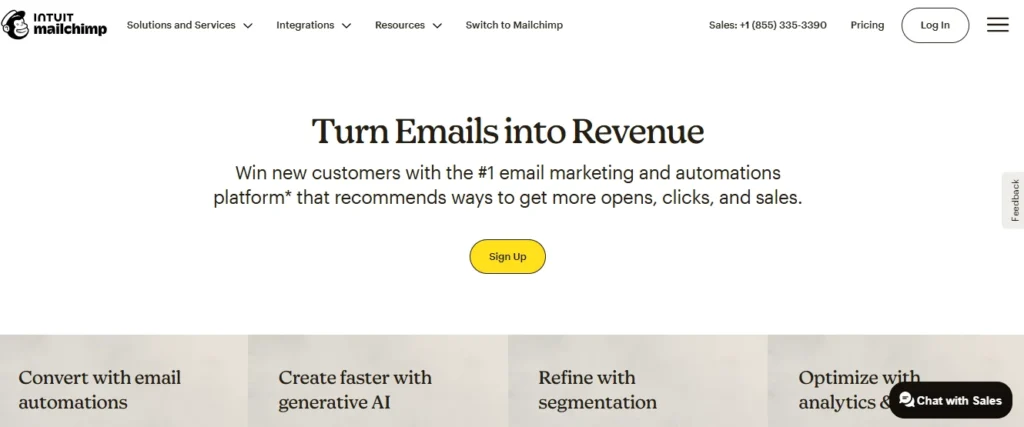
Why it’s here:
Mailchimp, the classic ESP, now includes predictive analytics and AI-powered content assistance for easy automation.
AI features:
Smart recommendations for subject lines, layouts, and audience targeting.
Pricing (2025):
- Essentials: from US $13/month (500 contacts)
- Standard: from US $20/month
- Premium: from US $350/month for large audiences
Pros: Simple interface; hundreds of integrations.
Cons: Advanced AI tools are limited to higher tiers.
Best for: Small businesses and newsletters.
Australia note: Maintain suppression lists and configure SPF/DKIM for domain trust.
5. Omnisend — AI Subject Lines for eCommerce
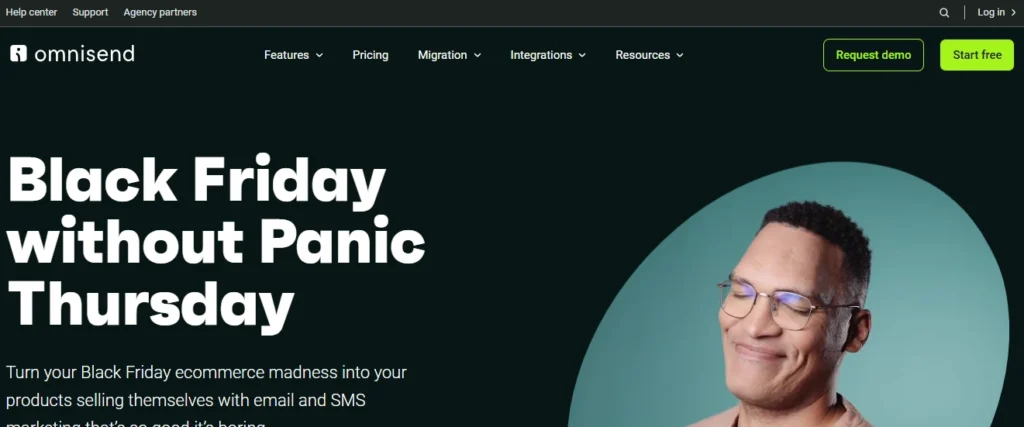
Why it’s popular:
E-commerce-first ESP with AI subject line generator, SMS automation, and quick Shopify setup.
AI features:
AI subject line suggestions, product recommendations, and A/B testing automation.
Pricing (2025):
Starts around US $16/month for small contact lists; scales with usage.
Pros: Fast setup; built-in SMS; affordable mid-tier.
Cons: Fewer B2B features.
Best for: DTC stores and smaller online retailers.
Australia note: Obtain explicit SMS consent and enforce quiet hours for sends.
6. GetResponse — AI Email Assistant + Funnels
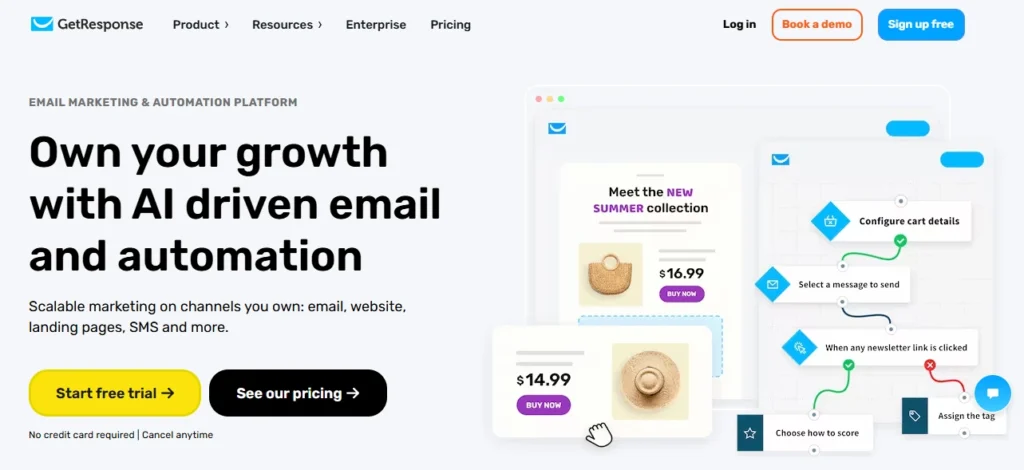
Why it’s here:
GetResponse combines email, automation, and landing pages with OpenAI-powered writing assistance.
AI features:
AI Email Writer, subject line testing, and conversion funnels.
Pricing (2025):
From US$19/month (1,000 contacts); scales by contacts and features.
Pros: Full-stack platform (emails, webinars, pages).
Cons: Interface slightly dated.
Best for: SMBs seeking an all-in-one solution.
Australia note: Store detailed consent metadata for ACMA compliance.
7. Brevo (Sendinblue) — Value Omnichannel + Aura AI
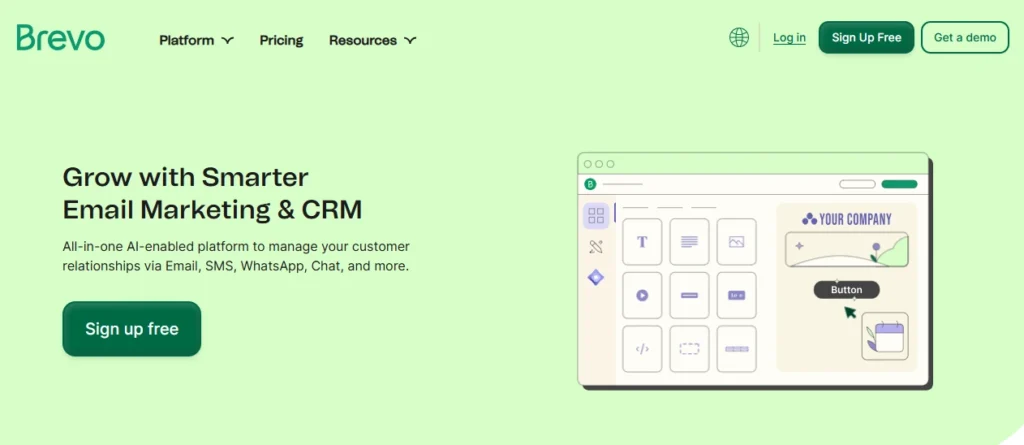
Why it’s unique:
Affordable ESP with email, SMS, chat, and CRM, now enhanced with Aura AI for email drafting.
Pricing (2025):
- Free: 300 emails/day
- Starter: from US $25/month
- Business: from US $65/month
- Enterprise: custom quote
Pros: Great value, multi-channel flexibility, approachable UI.
Cons: Lighter AI than enterprise suites.
Best for: Small teams or startups on tight budgets.
Australia note: Confirm SPF/DKIM setup and regional data storage.
8. Phrasee — AI Language & Subject Line Optimizer
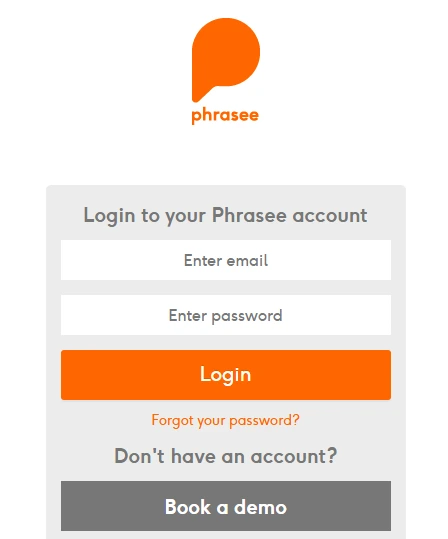
Why it’s here:
Uses deep learning for brand-safe, high-performing subject lines and CTAs.
AI features:
Predictive Natural Language Generation (NLG) that mimics brand tone.
Pricing (2025):
Enterprise-only, custom quotes based on send volume.
Pros: Proven uplift in open/click rates.
Cons: Not an ESP; high cost suits big brands.
Best for: Enterprises needing consistent, high-impact language.
Australia note: Secure all API integrations with your ESP.
9. Jasper — AI Copy & Brand Voice Generator
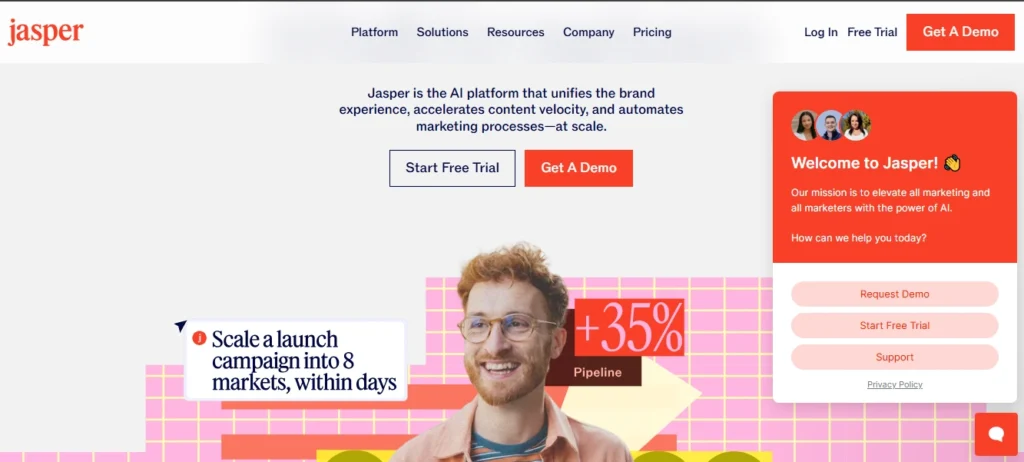
Why it’s useful:
A cross-channel AI writing assistant for email, ads, and web content, using stored brand voice.
AI features:
Long-form generation, tone control, workflows, and templates.
Pricing (2025):
- Pro: from US $59/user/month
- Business: custom pricing for teams
Pros: Quick, on-brand copywriting; integrates with most ESPs.
Cons: Doesn’t send emails; needs manual QA.
Best for: Agencies and content-heavy businesses.
Australia note: Keep version logs for compliance audits.
10. Zoho Campaigns — Zia AI Integration
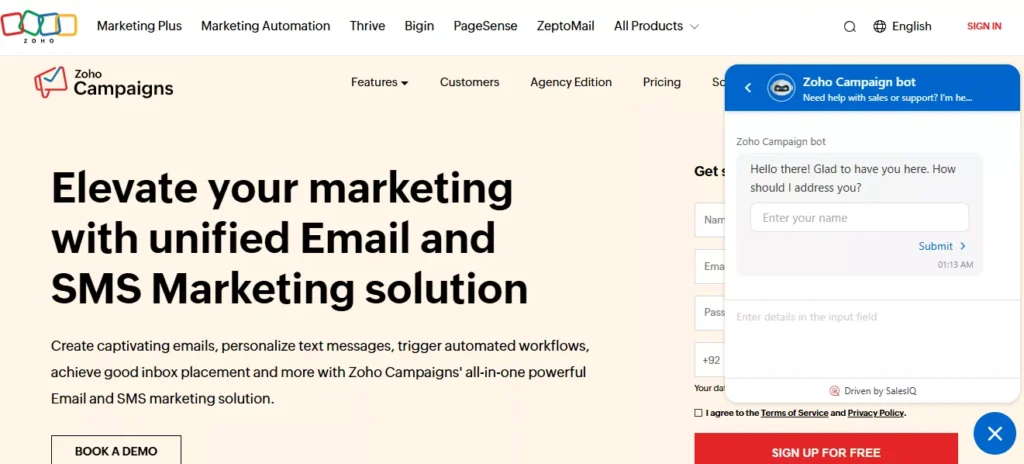
Why it’s here:
Affordable platform for existing Zoho users with Zia AI insights for timing and engagement.
AI features:
Smart send-time optimization, content suggestions, and reporting.
Pricing (2025):
- Free tier: up to 2,000 contacts
- Paid plans from US $4/month for 500 contacts
Pros: Excellent value; integrates with Zoho CRM.
Cons: Limited advanced AI automation.
Best for: Zoho-based SMBs.
Australia note: Choose AU data-centres when possible.
Quick Comparison Snapshot
| Category | Top Picks |
| E-commerce Focus | Klaviyo, Omnisend |
| CRM & Automation | HubSpot, ActiveCampaign |
| AI Copywriting | Phrasee, Jasper |
| Budget & Simplicity | Brevo, GetResponse, MailerLite |
| Design Strength | Campaign Monitor |
Australia Spam Act 2003: Key Compliance Checklist
✅ Get consent before sending (express or inferred).
✅ Identify your business clearly.
✅ Include a working unsubscribe link.
✅ Honour unsubscribes immediately.
✅ Implement SPF, DKIM, and DMARC for domain trust.
✅ Store consent logs (timestamp, IP, form source).
💡 ACMA fines up to $4 million have been issued for non-compliance.
How to Choose Your Ideal AI Email Marketing Platform
- Define your goal (revenue, engagement, or efficiency).
- Model pricing based on 12-month list growth.
- Check integration with your CRM or store.
- Confirm data handling and consent tracking.
- Run a 30-day pilot A/B test to compare AI vs manual emails.
Emerging Trends (2025–26)
- Agentic workflows: AI that drafts, segments, and schedules automatically.
- Predictive optimization: Replacing traditional A/B testing.
- Privacy-first personalization: Smarter results from clean, consented data.
- Australian adoption: Growing fast but under scrutiny, transparency builds trust.
Also Read: 5 Smart Strategies to Drive ROI with CRM Users Email List in Account-Based Marketing
Conclusion: Test, Measure, and Scale Responsibly
Every brand’s best tool depends on its goals:
- eCommerce growth: Klaviyo or Omnisend
- CRM and automation: HubSpot or ActiveCampaign
- Creative and brand voice: Jasper or Phrasee
Whichever you choose, test results early, track compliance, and maintain clean consent records under the Spam Act 2003. Smart automation + ethical data = sustainable success.
FAQs
Do AI subject lines really improve results?
Yes. Tools like Omnisend and Phrasee report consistent open-rate lifts.
Which tools include send-time optimization?
ActiveCampaign, Campaign Monitor, and MailerLite all adjust delivery times using predictive models.
Is Mailchimp still competitive in 2025?
Yes, strong predictive segmentation and a new AI assistant keep it relevant.
What’s a realistic ROI benchmark?
Industry studies show $36–$50+ return per $1 spent, depending on deliverability and data hygiene.

Similar Posts
Nexcopy: Leading USB Duplicators for Data Replication
What is Computer Vision Technology, and Where is it Used?
Understanding the HBF 777 Sleep Study